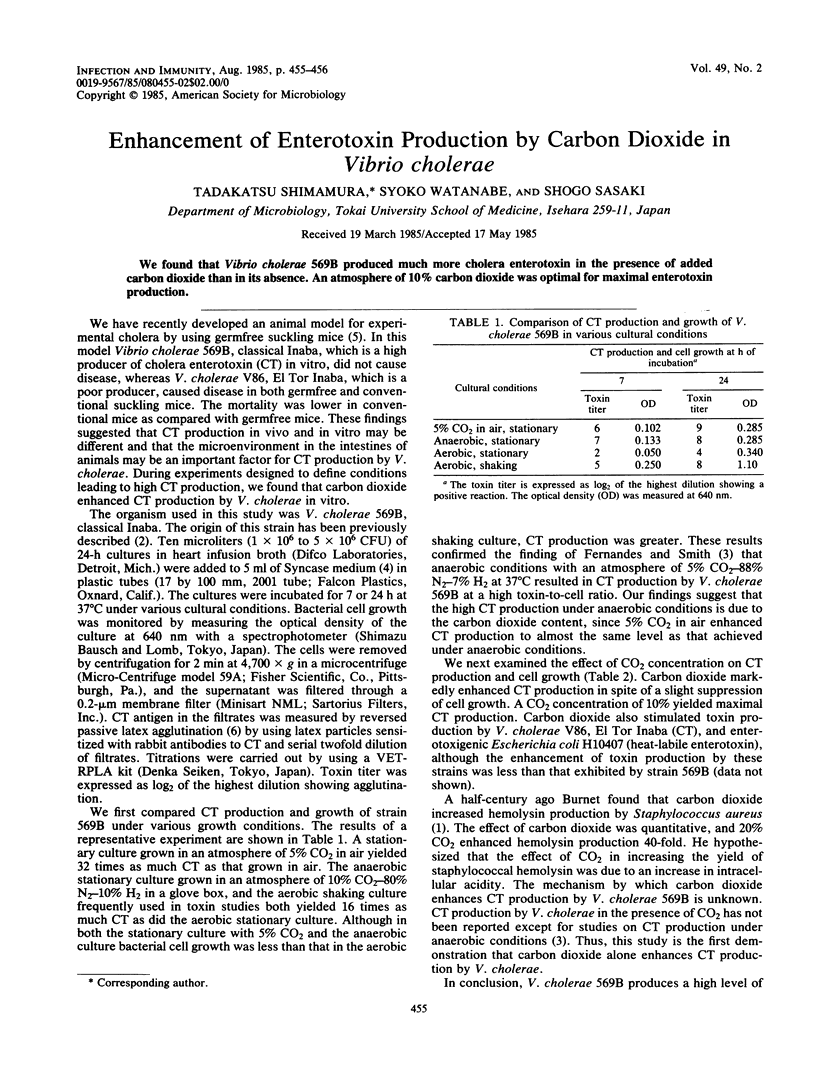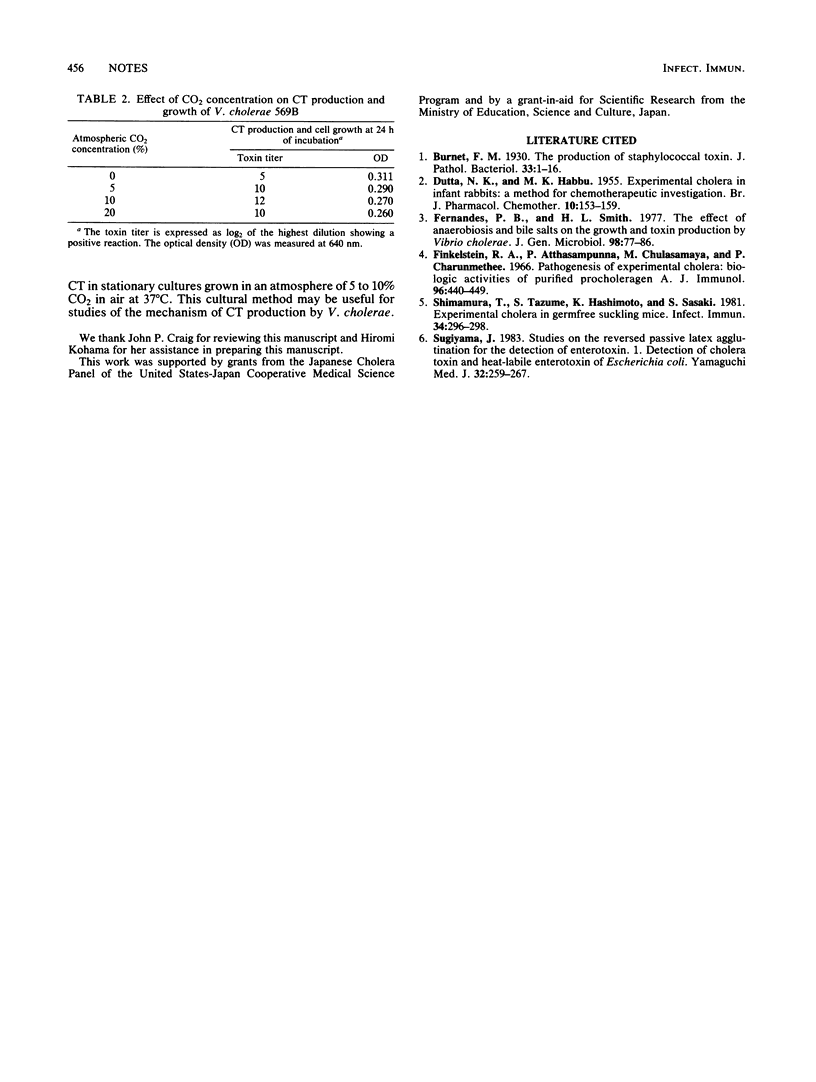Abstract
We found that Vibrio cholerae 569B produced much more cholera enterotoxin in the presence of added carbon dioxide than in its absence. An atmosphere of 10% carbon dioxide was optimal for maximal enterotoxin production.
Full text
PDF

Selected References
These references are in PubMed. This may not be the complete list of references from this article.
- DUTTA N. K., HABBU M. K. Experimental cholera in infant rabbits: a method for chemotherapeutic investigation. Br J Pharmacol Chemother. 1955 Jun;10(2):153–159. doi: 10.1111/j.1476-5381.1955.tb00074.x. [DOI] [PMC free article] [PubMed] [Google Scholar]
- Fernandes P. B., Smith H. L., Jr The effect of anaerobiosis and bile salts on the growth and toxin production by Vibrio cholerae. J Gen Microbiol. 1977 Jan;98(1):77–86. doi: 10.1099/00221287-98-1-77. [DOI] [PubMed] [Google Scholar]
- Finkelstein R. A., Atthasampunna P., Chulasamaya M., Charunmethee P. Pathogenesis of experimental cholera: biologic ativities of purified procholeragen A. J Immunol. 1966 Mar;96(3):440–449. [PubMed] [Google Scholar]
- Shimamura T., Tazume S., Hashimoto K., Sasaki S. Experimental cholera in germfree suckling mice. Infect Immun. 1981 Oct;34(1):296–298. doi: 10.1128/iai.34.1.296-298.1981. [DOI] [PMC free article] [PubMed] [Google Scholar]


